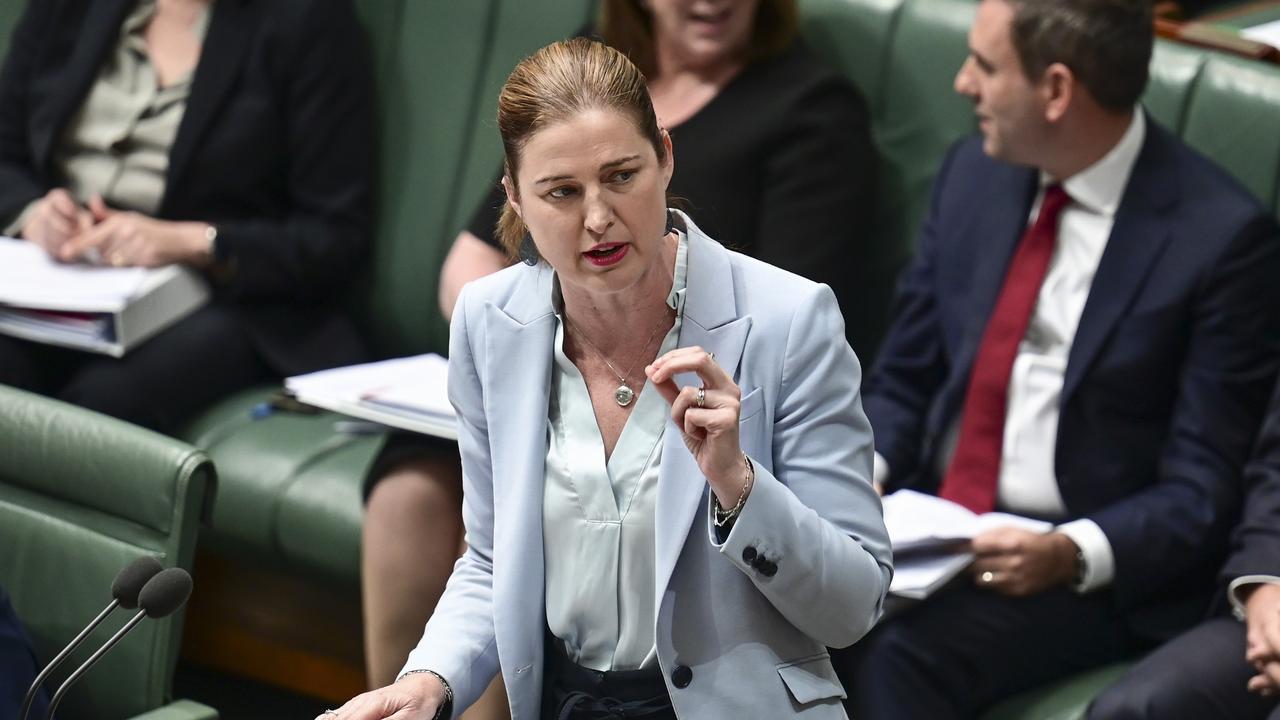Albanese’s housing target in jeopardy as 2023 marks worst year for home approvals in 11 years
A shock deficit in the number of new homes being approved has put the federal government’s housing target in jeopardy.
Australia would need to approve almost 80,000 more homes a year if it was to meet the Albanese government’s aspirational target of 1.2 million new homes by mid-2029.
Fresh data, released by the Australian Bureau of Statistics on Thursday, showed the number of dwellings approved in 2023 fell to its lowest annual level since 2012, with just 162,194 homes signed off for construction.
Last year, the federal government set an aspirational target of building 1.2 million well-located homes in the five years from July 2024. To achieve this target, 240,000 new homes will need to be built annually.
Prior to the Covid-19 pandemic, dwelling approvals on a 12-month rolling average were about 177,000.

NAB’s head of market economics Tapas Strickland said achieving the government’s target would require a significant uptick in approvals.
“Unfortunately, a supply fix is not coming in a hurry,” Mr Strickland said.
“To put the government’s aspirational target for 1.2 million homes over five years in reach, building approvals would need to return to levels achieved through the 2015-17 east coast apartment building boom.”
The subdued annual rate of dwelling approvals stood in sharp contrast with the very strong population growth over the past year that had put pressure on rents and dwelling prices, Mr Strickland said.
Australia’s population aged over 15 has increased by 664,000 in the past year, taking the population per dwelling approval ratio to 4, its highest level in history, and well above its long-run average of 1.5.

Commonwealth Bank economist Stephen Wu said a combination of higher interest rates, elevated building costs and constraints in the construction industry had acted as a disincentive for developers to invest in new projects.
“The more significant planning process involved in larger projects also means that multi‑unit dwelling activity takes longer to respond to stimulatory policy such as the monetary easing we expect later this year,” Mr Wu said.
“This is likely contributing to approvals for apartments and townhouses looking a little soggier than detached dwellings at this juncture.”
Approvals would pick up marginally through 2024, Mr Wu added, due to the one-off increase to the cash rate in the second half of 2023 and expected easing of monetary policy in coming months.
“The change in the cash rate rather than the level tends to drive activity,” he said.
“Even so, this process operates with a lag and so we still expect 2024 to be another weak year for approvals.”

Last year’s result was capped off by a 9.5 per cent decline in December — well below economists’ expectations of a 0.5 per cent increase.
The decline was overwhelmingly driven by a fall in approvals for apartments, units and townhouses which sank 25.3 per cent to 4354, according to the seasonally adjusted figures.
Approvals for the less volatile detached housing eased by just 0.5 per cent to 8416.
The results of total dwellings were mixed by state, with declines posted in Victoria, down 18.4 per cent, South Australia, down 11.8 per cent, and Tasmania, down 2.7 per cent.
However, Queensland climbed 8.2 per cent, Western Australia rose 7.9 per cent, and NSW firmed 2 per cent.
In a statement, federal Housing Minister Julie Collins said the government was “working hard” to deliver its housing agenda.
“We’re supporting the states and territories to meet this target through the $3bn New Homes Bonus, the $500m Housing Support Program, the $10bn Housing Australia Future Fund and new incentives to boost the supply of rental housing,” she said.



